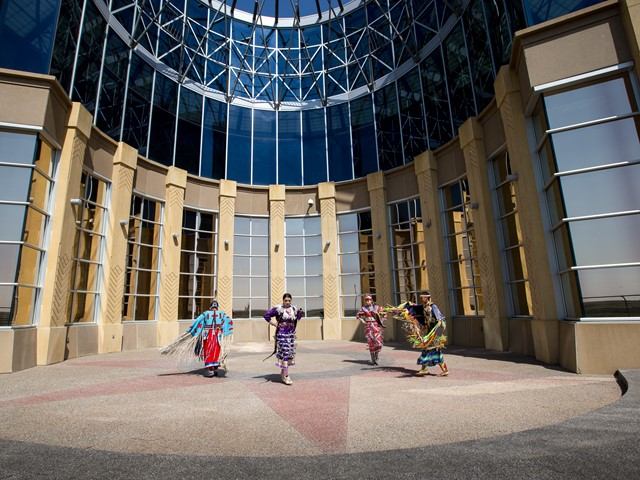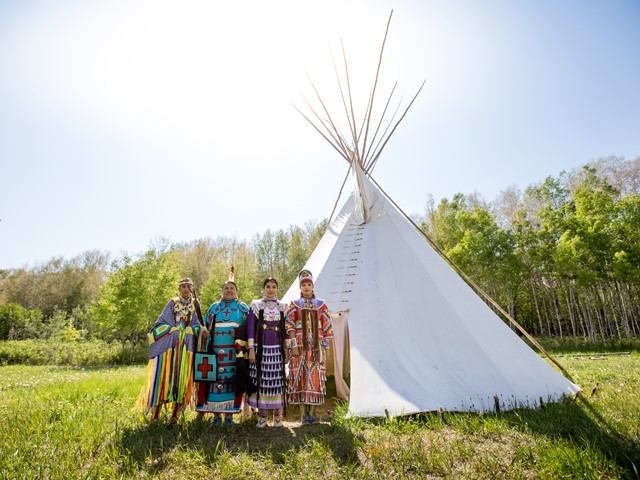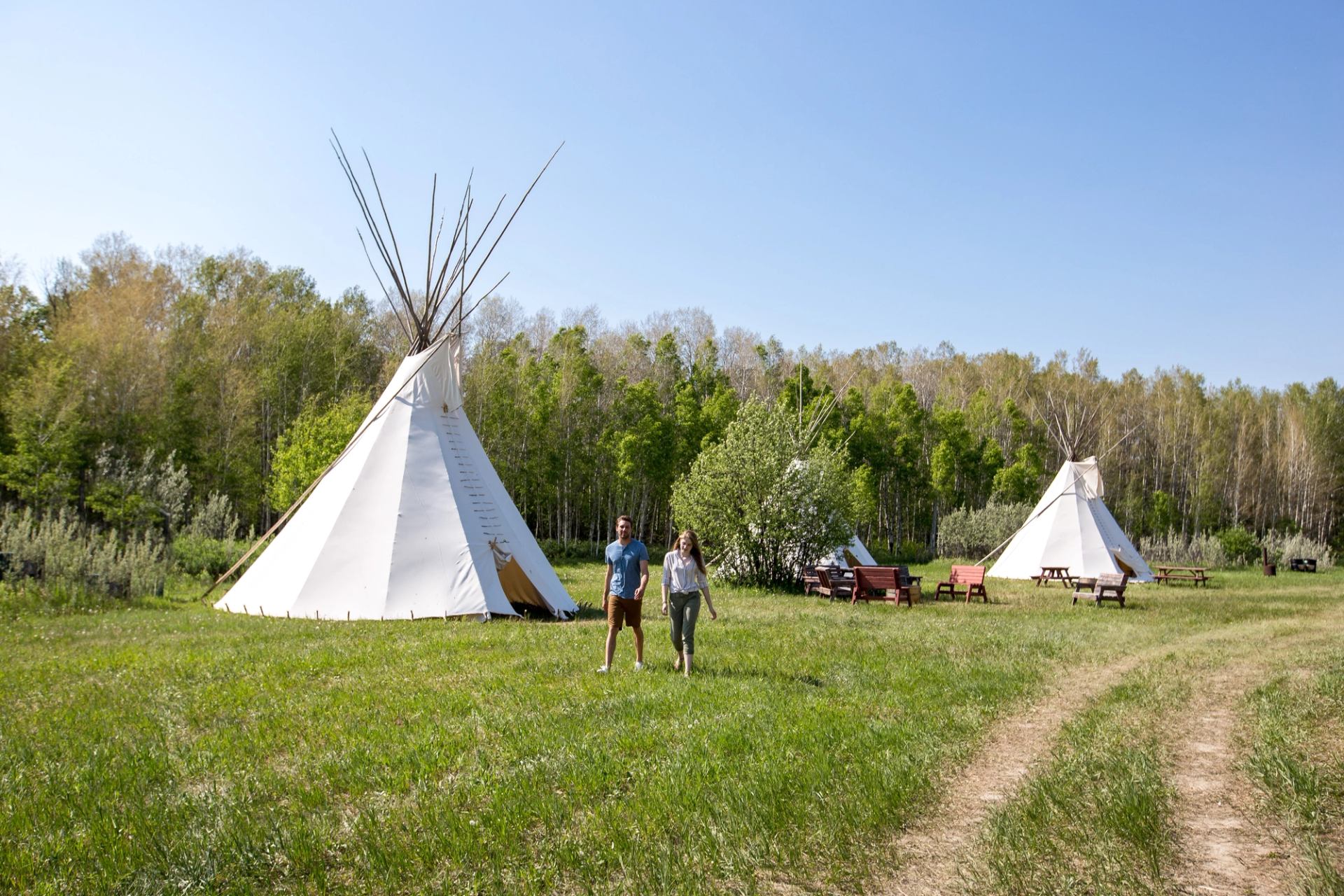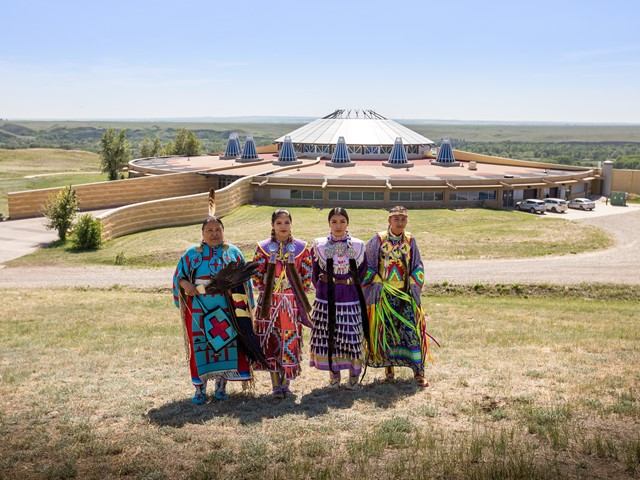1 / 5
Blackfoot Crossing Historical Park looks to the past and into the future. It's the site where Treaty 7 was signed in 1877. As such, it’s a National Historic Site. But Blackfoot Crossing also has a greater purpose. It is dedicated to promoting and preserving the Siksika Nation’s language, culture and traditions. The park, about 117 km (73 mi) southeast of Calgary, features a stunning eco-friendly museum with interactive exhibits that explain how Siksika (Blackfoot) culture developed and how it is thriving. The cafeteria serves traditional Indigenous foods, while the gift shop features the work of local artisans. Dance and craft demonstrations occur frequently, and museum tours guided by Siksika interpreters can be booked in advance. Visitors can take a self-guided tour of the numerous historic sites around the property. Tipi camping is available for those who want an in-depth Blackfoot cultural experience.
Read more



